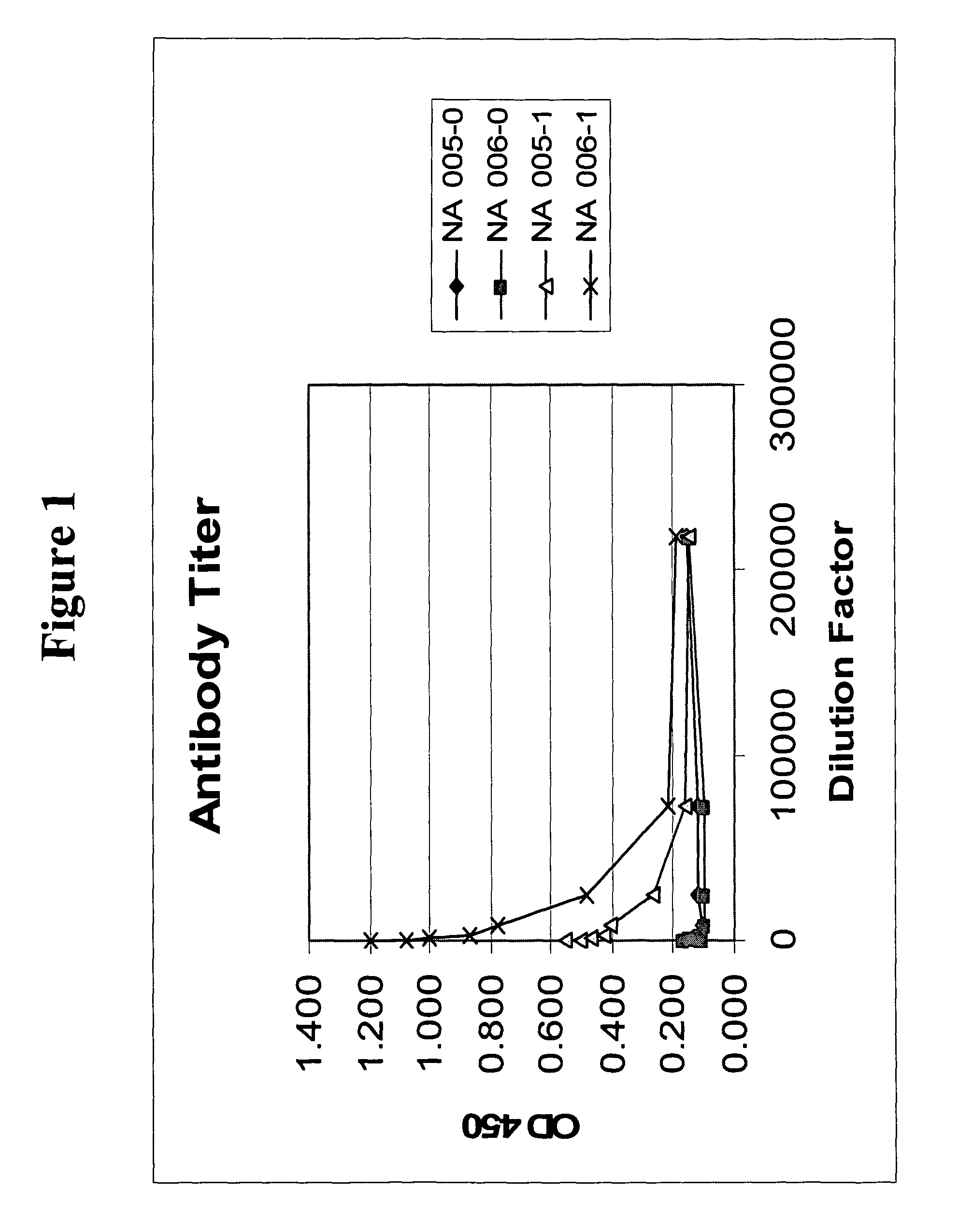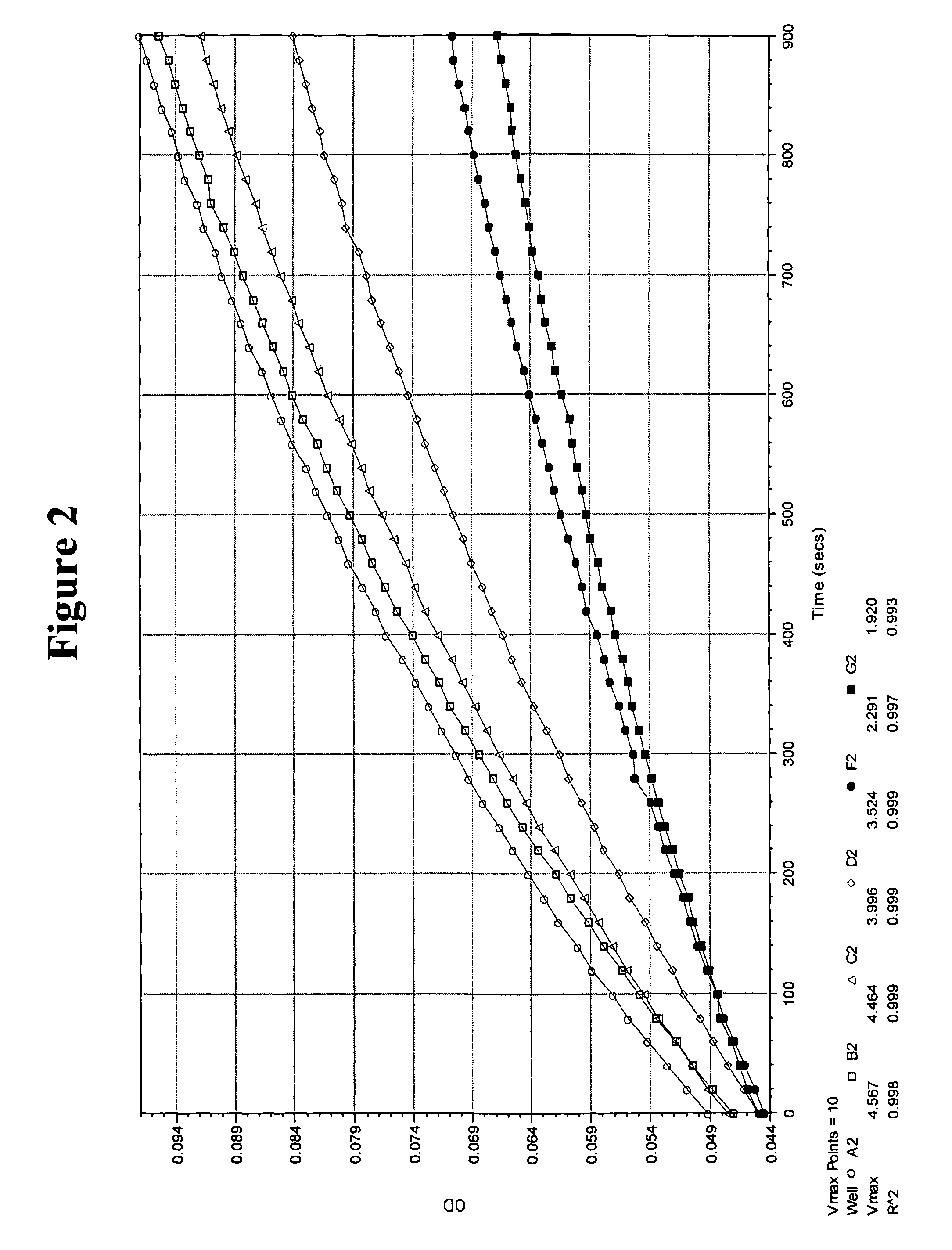Immunoassay for specific determination of S-adenosylmethionine and analogs thereof in biological samples
a technology of immunoassay and s-adenosylmethionine, which is applied in the field of clinical chemistry, can solve the problems of increasing the risk of heart disease, limited information regarding drug or food interaction with sam, and inconsistent published results
- Summary
- Abstract
- Description
- Claims
- Application Information
AI Technical Summary
Benefits of technology
Problems solved by technology
Method used
Image
Examples
example 1
Preparation of Haptens
1-1. Preparation of 5′-N-Methyl, 5′-N-butyryl-5′-dexoyadenosine (Aza-deamino-SAM, AdaM):
[0215]AdaM was prepared by reacting 5′-Methylamino-5′-deoxy-(2′,3′-O.O-isopropylidene) adenosine with methyl-4-iodobutyrate followed by base hydrolysis with barium hydroxide to remove methyl ester. The 5′-methylamino-5-deoxy adenosine was prepared from (2′,3′-O,O-isopropylidene) adenosine in two steps via 5′-ρ-Toluenesulfonyl-(2′,3′)-O,O-isopropylidene) adenosine intermediate. (Scheme 1)
[0216]
[0217]5′-ρ-Toluenesulfonyl-(2′,3′-O,O-isopropylidene) adenosine: Into a round bottomed flask was added 10 g (32.5 mmole) of (2′,3′-O,O-isopropylidene) adenosine followed by 75 ml anhydrous pyridine. The flask was swirled and heated mildly with a heating gun over 15 minutes to aid dissolution of the solids. The solution was cooled with continual stirring in an ice bath, and in five portions a total of 7.1 g (37.0 mmole) of ρ-toluenesulfonyl chloride was added. The reaction mixture become...
example 2
Preparation of Conjugates
2-1. General Procedure:
[0253]Review on protein conjugation is readily available (Bioconjugation Techniques, by Hermanson, G. T., Academic Press Inc., 1995; Chemistry of Protein Conjugation and Cross-Linking, by Wong, S. S., CRC Press, Inc. 1991; Cross-inking Reagents, technical handbook, Pierce Biotechnolgoy, Inc. 2005). Technical handbooks and bulletins from commercial sources are abundant. The description that follows are a few common examples of conjugation chemistries which are readily available to someone of ordinary skill in the art.
[0254]A hapten with a carboxyl functional group was reacted with NHS in the presence of DCC in DMF. The NHS ester of the hapten in DMF was then slowly added to a solution of protein in 100 mM phosphate (pH 8.0), or 100 mM carbonate or bicarbonate (pH 9.0). For immunogen, the carrier protein can be BSA, BgG, BTG, or KLH, etc. while for enzyme conjugate, the enzyme with high specific activity, e.g., HRP, AP, and β-galactosida...
example 3
Antibody Preparation
3-1. General Procedure:
[0262]The examples below are illustrative of the invention, and not intended to be limiting. Various animals such as mouse, rat, goat, sheep, and chicken, etc. can be used to produce polyclonal antibody. Once the polyclonal production is successful, monoclonal production becomes feasible. Mouse monoclonal production is a common practice, based on the procedure developed by the pioneer work of Kolher and Milstern (Nature, 256, 495-497, 1975). Rabbit monoclonal and Rabbit-Mouse hybrid monoclonal clones have been demonstrated more recently (Stronsberg, A. D. and Guillet, J-G., U.S. Pat. No. 4,859,595, 1989; Raybould, T. J. G., and Takahashi, M. U.S. Pat. No. 4,977,081, 1990; McCormack, R. T. et al, U.S. Pat. No. 5,472,868, 1995; Spieker-Polet, et al, PNAS 92, 9348-9524, 1995.)
[0263]Blood was collected periodically from immunized animals and cells were removed by centrifugation. Antisera thus obtained were then evaluated to determine the immune...
PUM
| Property | Measurement | Unit |
|---|---|---|
| volume | aaaaa | aaaaa |
| diameter | aaaaa | aaaaa |
| diameter | aaaaa | aaaaa |
Abstract
Description
Claims
Application Information
 Login to View More
Login to View More - R&D
- Intellectual Property
- Life Sciences
- Materials
- Tech Scout
- Unparalleled Data Quality
- Higher Quality Content
- 60% Fewer Hallucinations
Browse by: Latest US Patents, China's latest patents, Technical Efficacy Thesaurus, Application Domain, Technology Topic, Popular Technical Reports.
© 2025 PatSnap. All rights reserved.Legal|Privacy policy|Modern Slavery Act Transparency Statement|Sitemap|About US| Contact US: help@patsnap.com



